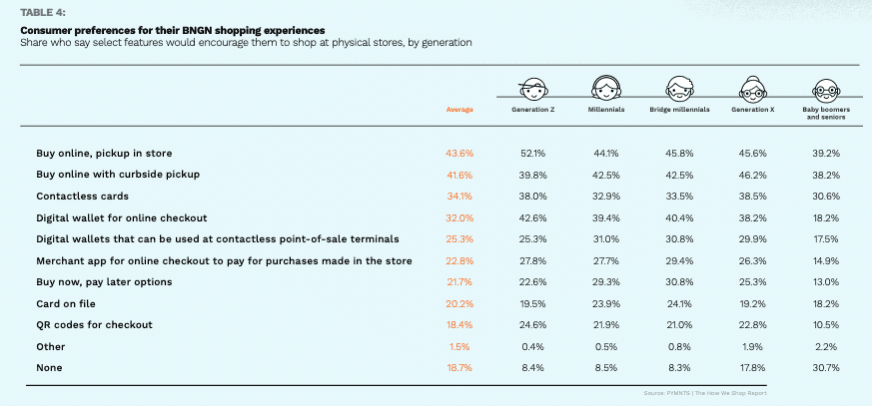
As retailers gear up to get people their orders throughout the holiday season — hopefully without the delays experienced last year — many are tacitly acknowledging the need to wean themselves, and consumers, off a reliance on delivery and encourage shoppers to pick things up instead.
Target, for example, earlier this week rolled out several new features for its curbside pickup and buy online, pick up in-store (BOPIS) offerings, including the ability to designate someone else to pick up their order, a way to add more items to a pickup order after the initial checkout and get everything at once, and a means of selecting backup items for food and beverage purchases.
Related news: Target Adds New Features to Curbside Pickup Offering
Amazon is also leaning into the local pickup of items, rolling out a Local Selling tool for third-party sellers on its marketplace that allows retailers to offer in-store pickup as a delivery option. PYMNTS research, conducted in collaboration with Carat from Fiserv, found that 94% of consumers have made a purchase on an online marketplace, with 91% having shopped on Amazon in the last 12 months.
Read more: Amazon Pushing More Aggressively to Develop Omnichannel Capabilities
One big reason for this shift is the cost of shipping items to customers’ front doors. By some estimates, 50% of delivery costs occur in the last mile — and although the past two years have conditioned people to expect delivery in many cases, they also expect low, or no, delivery fees, forcing retailers to cover some of the costs.
See also: 50% of Delivery Costs Occur in Last Mile, Putting Pressure on Transport Providers
Companies large and small across the U.S. are also in the midst of a hiring crunch. Over 50% of employers were unable to hire enough staff in September, according to the National Federation of Independent Businesses, forcing retailers to rely more heavily on the staff they do have — and perhaps making them hesitant to send employees out of the store. Target, for example, is hiring 30,000 fewer seasonal workers this year and is giving current employees five million more hours to work.
See more: Retailers Lean on Employees to Do More Amid Labor Shortage
Getting People in the Door
Expanded curbside pickup and BOPIS options could also be a boon for retailers looking to get more customers in the door — especially during one of the busiest shopping seasons of the year. PYMNTS research found that nearly 44% of consumers say BOPIS offerings would encourage them to shop at physical stores, and approximately 42% say the same about curbside pickup.

Read more: 5K ‘Need It Now’ Consumers Tell PYMNTS What They Expect, Value Most From Retailers
Andrew Robbins, CEO of Paytronix, said in a recent interview with PYMNTS that curbside pickup also has some benefits over delivery for consumers.
“When you order for delivery, you’re not sure exactly when it’s going to show up,” he explained. “If it takes just a minute to jump in the car and hop over there, and you know it will come directly to you so you can keep the kids in the car, it just makes sense.”
You may also like: Consumer Craving for Digital Experiences Supports Use Case for QR Codes, Online Ordering and Curbside Delivery
But as PYMNTS has previously reported, consumers are increasingly making purchasing decisions based not just on their preferred channel, but also on when they might need the items they’re purchasing. Many are willing to order online for delivery for products they don’t need immediately, with 50% of consumers increasing their “buy now, get later” shopping behaviors in the last 18 months — and as holiday shopping gets underway earlier this year, Christmas presents might fall into that category.
Still, in 2020, with 83% of people doing at least some of their holiday gift shopping online, 72% of consumers used curbside pickup more than in 2019 and 56% increased their use of BOPIS, according to PYMNTS research conducted in collaboration with PayPal — though only time will tell if these patterns will carry over from year to year.
Read next: 2020 Holiday Shopping Retrospective Report: Milestones Made in a Year That Almost Wasn’t